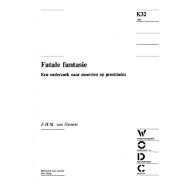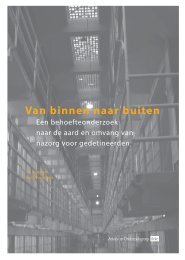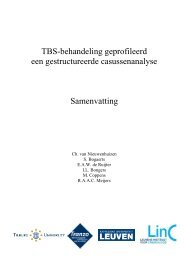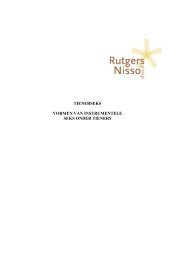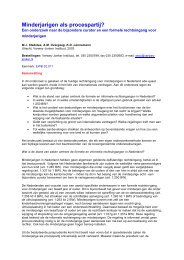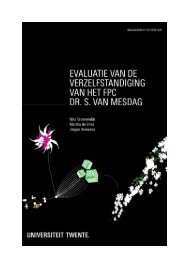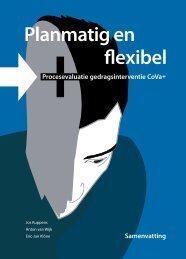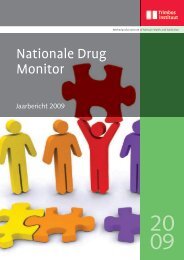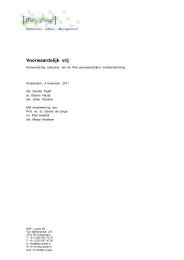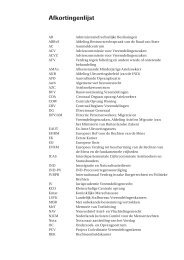Procesevaluatie observatieafdelingen Teylingereind - WODC
Procesevaluatie observatieafdelingen Teylingereind - WODC
Procesevaluatie observatieafdelingen Teylingereind - WODC
You also want an ePaper? Increase the reach of your titles
YUMPU automatically turns print PDFs into web optimized ePapers that Google loves.
Summary<br />
This is the report on a process evaluation study of the two observation units in the<br />
<strong>Teylingereind</strong> Forensic Centre. The units started up in 2009. The first (‘de Ven’) carries out<br />
clinical observations on juvenile suspects for the purpose of decision diagnostic assessment,<br />
while the second (‘de Gaag’) performs clinical observations for the purpose of treatment<br />
diagnostic assessment of juvenile delinquents on whom an ‘institutional placement order’<br />
(PIJ-maatregel) has been imposed. The adolescents stay at a unit for seven weeks and are<br />
examined by a multidisciplinary team containing a research leader, an editor, a lawyer,<br />
psychiatrist, psychologist, test assistant, art therapist, social milieu investigator, teacher, and<br />
group leader(s) or clinical social worker(s).<br />
The overarching question of the process evaluation was: What is the background, the<br />
goal, the working method and the current functioning of the observation units in<br />
<strong>Teylingereind</strong> and is there an understanding of (measurement of) the degree to which the<br />
goals of the units are achieved? To answer this question the study was designed to take place<br />
in three phases. The first phase addressed the background, goals and working method of the<br />
observation units; the second addressed the current functioning of the units; and the third<br />
focused on the experiences of the users of the clinical reports (treatment practitioners, public<br />
prosecutors, judges) and the follow-up programme for the adolescents.<br />
The research methods required to answer these questions had to be adapted in several<br />
ways because of objections raised by <strong>Teylingereind</strong>. For example, the current functioning of<br />
the observation units could not be assessed using direct, independent observation measures, as<br />
<strong>Teylingereind</strong> supposed that it might affect the diagnostic process. Instead, more indirect<br />
observation was carried out, based predominantly on the information presented by staff<br />
during staff meetings and in their written reports. Consequently, some of the information<br />
gathered in this study mainly reflects written communications between the staff of the<br />
observation unit. Furthermore, the unit for treatment and PIJ-prolongation advice (‘de Gaag’)<br />
had to be disregarded in the process evaluation study: it was temporarily closed as few or no<br />
new clients were presented. This study therefore mainly targeted the ‘de Ven’ unit.<br />
Data collection took eight months (15 February – 15 October 2010). Interviews were<br />
held with 55 individuals connected with the observation units (initiators - i.e. representatives<br />
of the institutions who took the initiative to set up the observation units - staff members, the<br />
adolescents themselves, their parents, treatment practitioners, public prosecutors and judges).<br />
In addition, questionnaires were filled out by 14 other individuals (initiators, the adolescents,<br />
and judges) to provide us with information on a variety of subjects. The diagnostic process of<br />
13



